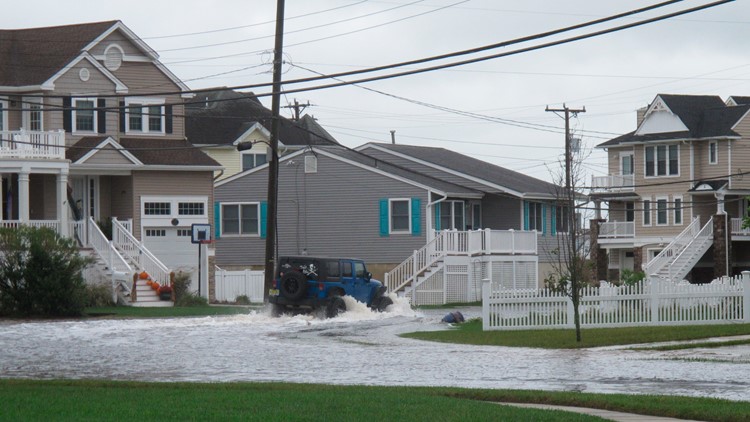A climate change report published in August by the United Nations found that as temperatures go up, land and sea ice across the globe is almost certainly going to keep melting, causing sea levels to rise for centuries to come.
Forty percent of the U.S. population lives in coastal communities, according to the National Ocean and Atmospheric Administration (NOAA), so the VERIFY team answered three questions regarding rising sea levels as part of this week’s “VERIFY Weekly” feature. You can watch the full video on our YouTube page here.
THE QUESTION
Are sea levels rising in the United States?
THE SOURCES
- William Sweet, oceanographer with the National Ocean and Atmospheric Administration (NOAA)
- Ben Hamlington, research scientist and team lead of the NASA Sea Level Change Team
THE ANSWER
Yes, sea levels are rising in the United States.
WHAT WE FOUND
NOAA and NASA monitor sea levels using tide gauges, which is a more-than-century-old technology, as well as satellites.
Their data show sea levels are rising across the entire U.S. coastline, but most rapidly along the East and Gulf coasts, where the water is rising an inch every five to seven years.
William Sweet, an oceanographer with NOAA, described the cause to VERIFY.
“It’s two-part ice melt, one-part thermal expansion,” said Sweet.
THE QUESTION
Is global warming causing sea levels to rise?
THE SOURCES
- William Sweet, oceanographer with the National Ocean and Atmospheric Administration (NOAA)
- Ben Hamlington, research scientist and team lead of the NASA Sea Level Change Team
THE ANSWER
Yes, global warming is the main cause of rising sea levels.
WHAT WE FOUND
Experts say global warming is the primary cause of rising sea levels, which is melting ice in Antarctica, Greenland, and mountain glaciers, as well as adding water to the ocean.
The ocean is also warming up as it absorbs excess heat from greenhouse gasses in the atmosphere, which is causing the water to expand. Then, on top of that, the land in some coastal areas is slowly sinking.
So what’s the impact?
“What it looks like is an increased frequency of high tide flooding. Flooding that used to not occur now is occurring on sunny days. And it's happening more often when it used to not happen,” NOAA oceanographer William Sweet told VERIFY.
According to Sweet, some areas could see five to 15 times more flooding by 2050, and the impact of a regular storm will be much more severe. In fact, a 2019 study published by the University of Southern California found sea level rise could displace 13 million Americans by 2100.
THE QUESTION
Are U.S. cities doing anything to combat rising sea levels?
THE SOURCES
- Doug Beaver, chief resilience officer for the City of Norfolk, Virginia
- Ann Phillips, special assistant to the governor of Virginia for Coastal Adaptation and Protection
- Skip Stiles, executive director of Wetlands Watch
THE ANSWER
Yes, some U.S. cities have launched resilience plans to combat rising sea levels.
WHAT WE FOUND
In Norfolk, Virginia, where the water is rising faster than anywhere else on the East Coast, the city has launched one of the boldest resilience efforts in the U.S.
They’ve nearly finished an 11-foot berm, two pump stations and a resilience park to protect the city’s Chesterfield Heights neighborhood. The Ohio Creek Watershed Project, as it’s known, was paid for with a $112 million federal grant.
The city also plans to spend $1.8 billion in the coming decades to raise its downtown sea wall, build new barriers, elevate roads and improve Norfolk’s stormwater system.
A study from the Center for Climate Integrity found fortifying all U.S. coastlines with sea walls could cost $400 billion by 2040. But experts told VERIFY doing nothing could be more costly.
“If something is not done, the flooding events will continue,” Norfolk’s chief resilience officer Doug Beaver said. “That’s why we’re trying to stay out in front of the problem.”
More from VERIFY: Yes, rising sea levels threaten national security for the US













